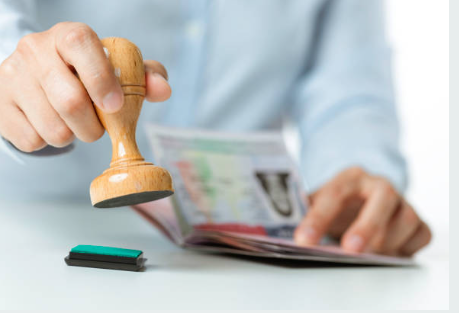Heat Exhaustion and Heatstroke
As the sun's strong in summers, you must keep yourself hydrated and stay cool across the hot and humid weather. The sunny season typically means never-ending days, and if you live in the circle of latitude, you are familiar with its effects. The weather in Qatar is very hot. Besides accepting precautions, you could fluently arrest to "HEAT EXHAUSTION" or far riskier a "HEAT STROKE”.
People who used to work outdoor such as laborers, drivers, shopkeepers, pedlars, and other pursuits who work outside, bear the hot sun. They have to face exhaustion and heat stroke. So what is HEAT EXHAUSTION AND HEAT STROKE?
"Heat Exhaustion":
Heat exhaustion is when a heat-linked sickness occurs after someone has been exposed to excessive temperature or because of dehydration. Two types of "Heat Exhaustion" are:
-
Water Depletion:
◦ When "Heat Exhaustion" occurs, the process of sweating decreases, and body temperatures rise to 104 centigrade F. Also, you can have headaches, extreme thirst, lost consciousness, and loss of fragility.
-
Salt Depletion:
◦ In "SALT DEPLETION," you can suffer from vomits, nausea, rapid muscle cramps, and lightheadedness.
Now what
"Heat Stroke":
Heat stroke is a situation in which your body starts overheating. Its temperature rises rapidly within 10 to 20 minutes, the perspiration system breakdowns, and the body is impotent to cool down. The temperature can no longer be in charge of the body. It is way riskier than "Heat Exhaustion," which can lead to death.
Causes of Heat Exhaustion and Heat Stroke:
The most frequent and common causes of "HEAT EXHAUSTION" and "HEAT STROKE" are:
Dehydration:
Intense dehydration is when you start losing more fluid than you take in. It is also because of sweating, vomiting, diarrhea, physical exercise in the harsh sun, or poor diet.
Alcohol Usage:
It can affect your body's proficiency in balancing your body temperature, which can lead you to "HEAT EXHAUSTION" or "HEAT STROKE." WARM WARDROBES:
Clothes that don't allow your body to discharge sweat and dissolve freely.
Read Also: Should I Get Public or Private Healthcare in Qatar?
When The Body Fails To Cool Itself:
Our body works according to our surrounding heat, resulting in core temperature. When it is sweltering outside, your body needs to regulate heat gain to balance the core temperature.
On sunny days, our body cools itself with the process of "Perspiration'. The discharge of sweat regulates body temperature. Somehow if you exercise in hot and humid weather, there are fewer chances to handle itself properly. It leads you to a lower version of heat illness called "HEAT-CRAMPS."
Symptoms of Heat Exhaustion:
Symptoms of "Heat Exhaustion" and Heat Stroke" are:
- Headache.
- Unsteadiness and nervousness.
- Lack of hunger and feeling ill.
- Extreme perspiration.
- Pale, grey skin.
- High pulse rate.
- Body cramps.
- Thirsty.
- Temperature higher than 36 C.
Heat Exhaustion is not typically severe. If you can treat it in 30 minutes, otherwise it can lead the patient into "HEAT STROKE," which needs treatment in an emergency.
Symptoms of Heat Stroke:
The common symptoms of "Heat Stroke" are:
- Temperature higher than 104 F.
- Lightheadedness.
- Lack of perspiration.
- Dry skin.
- Vomits.
- Weakness.
- Muscles cramps.
- Strong or slow heartbeat.
- Obliviousness.
- Behavioural swings such as turbulence, overwhelm, confusion, etc.
- Brainstorm.
- Painful headache.
- Fast or depth-less breathes.
"How to Protect Yourself from Heat Exhaustion and Heat Stroke":
There are some precautions you should follow to protect yourself from "HEAT.
EXHAUSTION":
Precautions:
- Increase the amount of water taken in a day; you should stay hydrated to keep yourself safe from "HEAT-RELATED-ILLNESS”. It will help your body to balance your temperature and also on an excellent sweat system.
- Avoid going outside during the daytime if it's not essential, or try to stay hydrated and keep taking rest in a cool place. Shot to plan your activities at a calmer time, such as night or early morning.
- Escape doing longer exercise or outside work if it's not life-and-death. After all, if you are not a summer person, you have a higher chance of getting into any heat-related illness. Your body will take a long time to adjust to hot weather.
- Protect yourself from sun tan because it decreases the ability of the body to cool down. In summer, use sunscreen with SPF of at least 15, glasses, and a floppy hat. You should apple the sunscreen after 3 hours or less if you sweat.
- Try to wear light-material clothes such as cotton or loose-fitting clothes. Avoid tight clothes to wear. They do not allow your body to cool itself.
- Avoid sitting in transport vehicles. It can lead you to death when any bus, bike, car, or other vehicle is parked in the sun. The vehicle's temperature increases by 20 degrees F, so never sit in a parked vehicle whether it is parked in the shade.
- You can take supplements to keep yourself hydrated and your temperature balanced.
- To keep yourself safe from "HEAT STROKE," you should take a shower twice with cold water to stay cool.
- You should avoid oily, spicy, and sweet food, this type of food can increase your body temperature due to poor functioning.
The Danger in Heat Exhaustion:
If you do not treat heat exhaustion, it will lead to a "HEAT STROKE." It may be a life-and-death condition that typically happens when your core body temperature reaches 40C or higher. It requires quick action and medical care; otherwise, you can lose your life.
The Danger in Heat Stroke:
"HEAT STROKE" is very dangerous and has many complications: Some serious ones are:
- It can cause serious swelling in the brain and organs, leading to permanent damage.
- Heat stroke is preventable but can cause death if the patient does not get proper and sensible treatment on time.
- "HEAT STROKE" is a dangerous condition that can lead to organ failure and brain damage. If anyone has symptoms, they should immediately rush to the emergency room or call the healthcare helpline.
Treatment of "Heat Stroke":
If someone has a "HEAT STROKE," you should immediately call the emergency as it is very dangerous. Till the ambulance is on its way, you should try to cool down the overheated patient, such as putting him in a cold water tub or cold shower.
At least spray him with cold water, and use ice packs on his body to cool down the temperature. Also, cover his head, feet, armpits, hamstring, under the abdomen and thighs, and neck with a cold, wet towel.
Remove all the extra clothing and take the patient to any cool place, somewhere in a shady spot, or somewhere an air conditioner or fan is available. If a person is in a sense, give him some cold water, or if he is not in a sense, try to get him to provide him with some cold water.
"HEAT STROKE" treatment point is to cool down your body for in any emergency when health care service is not provided, you can use these methods:
- Put the patient in ice water. It will help to the lowering the body temperature.
- You can spray cold water mist and give hot air to the patient. It will create the evaporation cooling method.
- Cover the patient with a cold, wet cloth.
The faster you take these actions, the less death risk will be.
Treatment of "Heat Exhaustion":
Suppose someone is having a "HEAT EXHAUSTION." In that case, they should stop doing all the work and stay at a cool place, drink some cold water or energy drink but don't use soft drinks because it can lead to dehydration.
Take a cold shower, cover your feet and head with a cold, wet towel, and wear light-weighted clothes and soft material. If you still don't feel good after one hour, you should check with the doctor. There are emergency medical treatment centers in Qatar.
Read More: How to Get a COVID-19 Vaccination Certificate in Qatar
Comments
No comments yet.
























